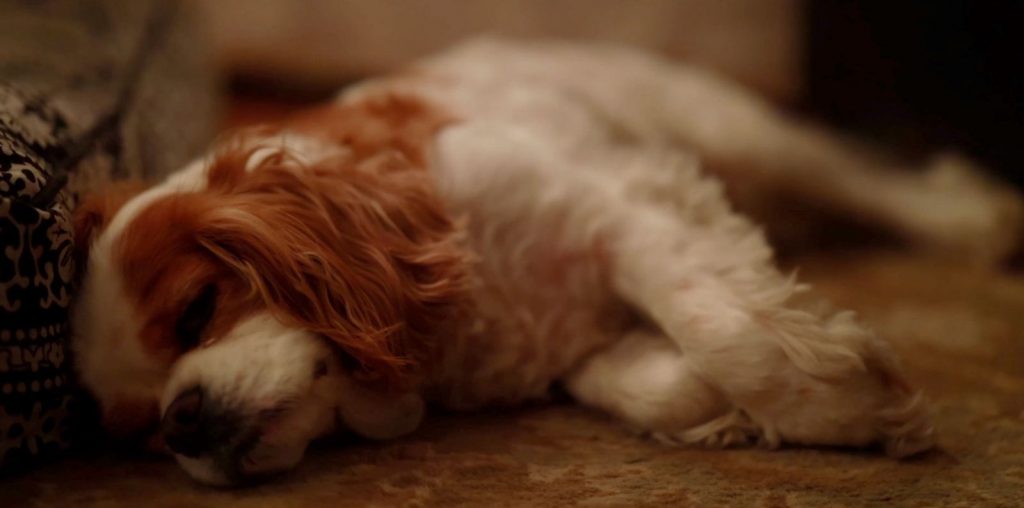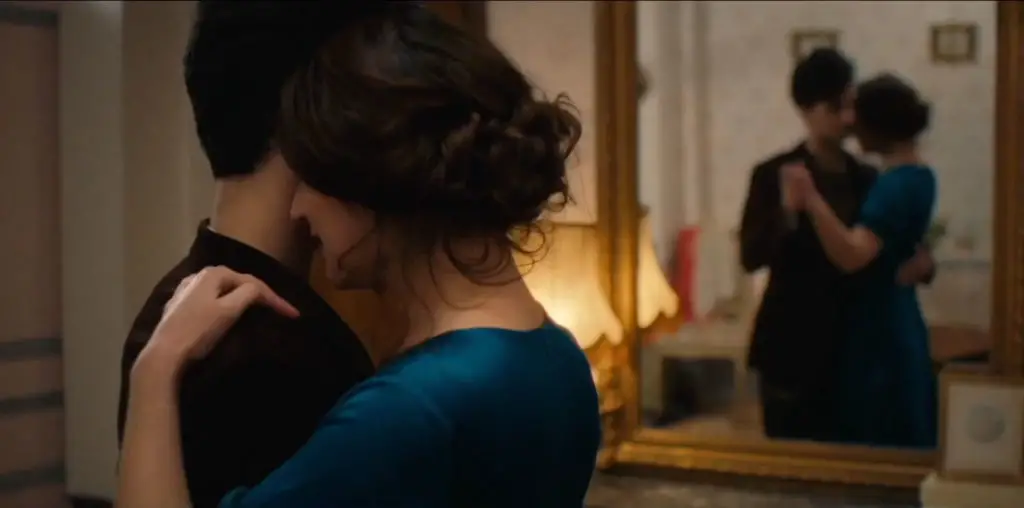
“Donald & Dot Clock Found Dead in Their Home” (Michael Kowalski) is about a woman’s love of rodents and a man’s dream of becoming the next Baryshnikov. Donald Clock (John Parcher) is a man with a receding hairline who wants to become a dancer. After having one very discouraging day, he decides to end his life. With a rope fastened to a bowling ball and looped around his neck, he plans to throw himself into a river, but he fails. Dot (Eugenie Bondurant) finds Donald and offers to give him a ride. Thus marks the beginning of a strange, beautiful relationship.
The two main characters are peculiar individuals. Donald might be a late bloomer, as his mother (Linda Gibb) calls him, but he doesn’t strike you as someone who’d blossom into a world-class dancer. He’s a bit clumsy and for inexplicable reasons, he’ll dance in drag. In fact, one of the first images you see of Donald is of him piled on a couch. He wears a white ballerina gown, white heels, white stockings, and a brown coat. As a man prone to crying and insouciantly twirling about down the streets, Donald couldn’t be any weirder. But, Dot can.
Dot has a Power Animal, a squirrel, and she believes that her duty is to help maintain the Rodent Harmonic Balance. She senses that Donald could also have a rodent Power Animal, so she’s more inclined to get to know him. Donald and Dot make a fitting couple, feeding off each other’s idiosyncrasies. Donald doesn’t reprimand Dot for periodically squeaking like a rat. On the contrary, in an effort to become closer to her, he actually makes the noises too.
The film presents Donald and Dot as if they are two sides of the same coin. One has what the other one lacks. For instance, Dot is more unpredictable and almost more aggressive than Donald. While neither character’s residences are extravagantly decorated, Dot’s house feels roomier than Donald’s (possibly due to a wide-angle lens). They’re both weird but in different degrees. Donald’s eccentricities are more superficial. If you get past his clownish hair and over-sized glasses, you’ll see that he’s more socially adept than his love interest. Dot’s bizarre habits are sub-textual. She looks pretty normal (excepting the resemblance to Molly Shannon’s Mary Catherine Gallagher), but the moment she starts making rat sounds and reveals her inner “Willard” (Glen Morgan, 2003), you realize that Dot’s an odd cookie.
“Donald & Dot” is like a fairy tale in many ways. The film begins with the turning of pages in a book entitled “fairy tale,” and ends with the closing of the book. It also features a minstrel (Ed Biro), whose acoustic guitar melodies resound to emphasize narrative developments. Instead of the Prince saving the Princess, though, it is the other way around. The Princess saves the Prince (twice) and monitors the Rodent Harmonic Balance. Kowalski does an excellent job telling this unconventional love story about two very unique people.
Disagree with this review? Think you can write a better one? Go right ahead in Film Threat’s BACK TALK section! Click here>>>

